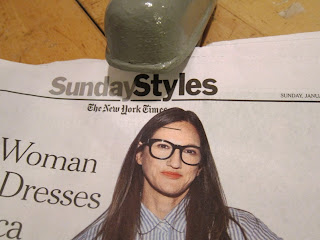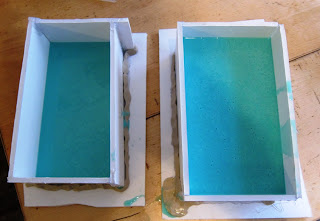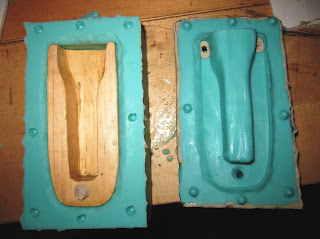http://www.kickstarter.com/projects/1748176346/whale-stapler
This stapler odyssey consumed my life for the last year.
My original plan was for a manufacturer to produce the whole thing so I could sit around all day collecting royalties and eating fancy cheese, but things weren't so simple.
First of all, I couldn't find a single stapler manufacturer still producing staplers in the United States of America! Designing and manufacturing from scratch, or even contracting with someone to produce just the whale parts would have made no financial sense in quantities of less than 40 million or so. Aside from the cost, there shouldn't be more whale staplers than actual whales out there, for moral reasons.
And finally, I wanted to create something that looked and felt handmade.
First step was to order 400 internal stapler parts from a factory in Guangdong.
The next step was to carve wooden whale parts that would fit the mechanism.

Starting to look whale-like ...
Here is our kitchen table table chock-a-block with casting supplies. You can make anything.

The side of the smooth-on resin box promises "It Will Change Your Life!" It's true.
The bottom piece only required a simple one part mold.

The mold box is traditionally made out of foam board and hot glue, which is what I used here. But tradition is perdition. The hot glue gives off bad fumes and makes those annoying ribbons of glue that get stuck everywhere, while the foam board starts to rip after a few uses.
I've heard the best way to make moldmaking boxes is with legos, which allows for easy assembly and disassembly with no waste. And is also a great excuse to play with legos again. Unfortunately, normal lego bricks barely exist anymore, just this crap, so I didn't have time to find some for this project.
The top required a more complicated two part mold.

The cavity underneath the wood was filled in with clay and cap nuts were glued to the bottom of the box to create registers between the two halves.

This is when the rubber hits the mold ...
Mold star! I really wanted to get the oomoo because it sounds so much like omoo, but the mold star is more durable and can survive more castings.
I spent a whole day staring at this wondering what is going on in there. On the surface it looked kind of like an ocean, which was a good sign.
There was a whale down there!
Setting the top of the two part mold (with pour spouts straws)
The resin happens really fast so get ready! Just mix the Parts A (really toxic so don't be alive near it) and Part B (you can pour it on your cereal), pour the mixture into the mold and it sets before you have a chance to stop and take pictures.
A perfectish replica!

After some sanding of the resin pieces, the stapler mechanism was attached with expoxy and plastic wood. Warning: Plastic wood MUST be stored upside down, no matter how wrong it looks, or dire consequences will result. How dire? Let's just say, did you ever wonder why the moon broke off from the earth in a cataclysmic explosion millennia ago? That was from protohumans failing to store their plastic wood upside down.
Just needs some paint and eyes, and ready for a night on the town.
Test staple .. Let's go!

The heavy weight of the resin top makes the stapling experience smooth and easy.
Preparing for mass production, kitchen already looking like the firebombing of Dresden.


























































